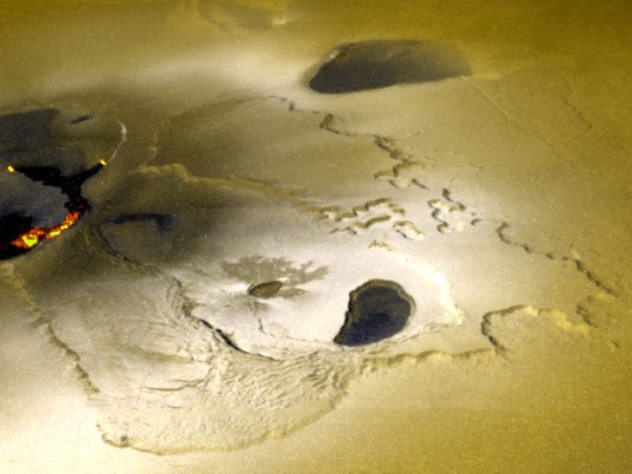

Its main feature is the sulfur-covered plains, which have a dirty-yellow color. Io’s surface is unlike either the cratered landscape of Callisto or the icy shell of Europa.

The gravity on this moon is only 18% of Earth’s, so during eruptions, gas and solid particles rise very high and reach space, spreading in all directions. Its complete map was created in 2012, but volcanic eruptions are of particular interest to scientists. The volcanoes and other details on Io’s surface will be the subject of investigation by the JUICE spacecraft. Because of this feature, Io is known as the most volcanically active moon in the solar system. The internal heat melts the sulfur, and it erupts to the surface, forming volcanoes. Another peculiarity of this world is the large amount of sulfur in its rocks. Instead, Io has a very large core of molten iron, surrounded by a mantle of silicates. There are no hidden oceans beneath its surface. The internal structure of Io is also unique among Jupiter’s moons. It is precisely the particles that have “escaped” from its surface (as well as from Europa’s surface) that make up the majority of Jupiter’s ghostly ring, which is located near the planet’s atmospheric boundary.

Io is currently actively losing its mass. Perhaps it once had large reserves of ice, but it evaporated long ago and flew off into space. While Europa, Ganymede, and Callisto are largely composed of water ice, the largest satellite closest to Jupiter hardly contains any. Source: ESAĪs a result of this, Io differs significantly from the rest of the moons of the giant planets and has much more in common with rocky planets of the Earth group. Consequently, not only internal heating of the core occurs there, but also surface cracking.
#IO MOON SURFACE FULL#
In addition, Io’s orbit has a significant eccentricity, so their effect incessantly increases then decreases over the 42 hours, taken by this moon to complete one full orbit around the giant planet.Īll this leads to the fact that tidal forces try to stretch Io, giving it an egg-like shape, while its own gravity resists this. The difference is that since Jupiter is 318 times heavier than Earth, the tides it creates are much stronger. This is slightly less than the minimum possible distance between the Earth and the Moon. This moon is not the closest to the gas giant of all the bodies that revolve around it, but still, at its closest point (periapsis), the distance from it to the upper layers of the gas giant’s clouds is 350,000 km. The main feature of Io that determines its appearance is its orbit. Relative sizes of Io, Earth, and the Moon. At the same time, it has an average density of 3.53 g/cm³, making it the densest moon in the Solar System. And it is the fourth-largest moon of the planet after Ganymede, Titan, and Callisto. Io has a diameter of 3642 km - slightly larger than the Moon. It’s a shame, as there really is a lot to see on this moon. But due to the mass and size limitations, this could only be done by removing some scientific equipment from the spacecraft. Of course, engineers could have added additional protection to JUICE to allow it to get closer to Io. The concentration of charged particles in this region of space is so high that they can easily damage not only a person who would find themselves there but also any electronic equipment. The matter is that Io rotates very close to the planet and moves inside its radiation belts. JUICE will observe it from a distance, not because there is nothing interesting there. We have previously talked about the last three. There are four of them in total: Io, Europa, Ganymede, and Callisto. And in the early 2030s, the probe will begin its main mission - to study the largest moons of Jupiter. It will spend the next few years traveling through the Solar System. The Jupiter Icy Moons Explorer ( JUICE) spacecraft was launched from the Kourou Cosmodrome in French Guiana on April 14, 2023. The Surface of Io Why JUICE will look at Io from afar However, this does not mean that there is nothing to see on it.

But the large moon Io, which is closest to the gas giant, will be observed from a distance. The JUICE spacecraft, which set off on a journey to Jupiter, will study closely three large moons of the giant planet: Europa, Ganymede, and Callisto.


 0 kommentar(er)
0 kommentar(er)
